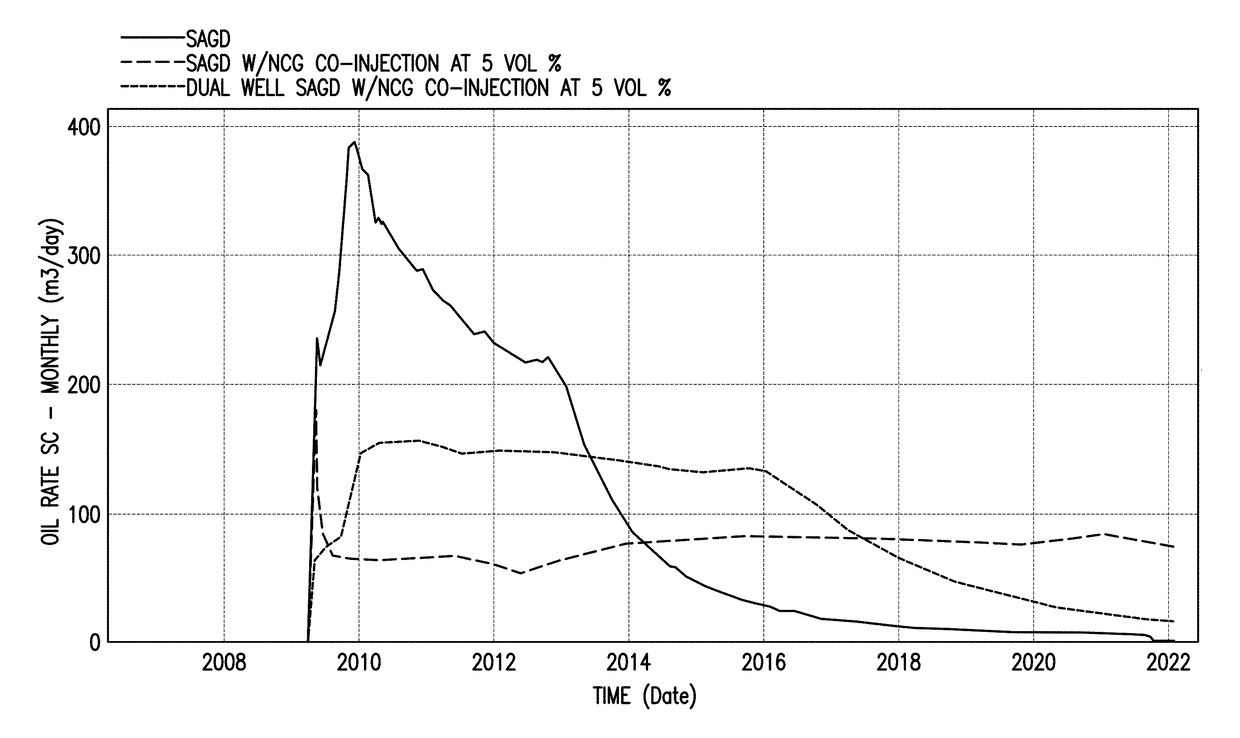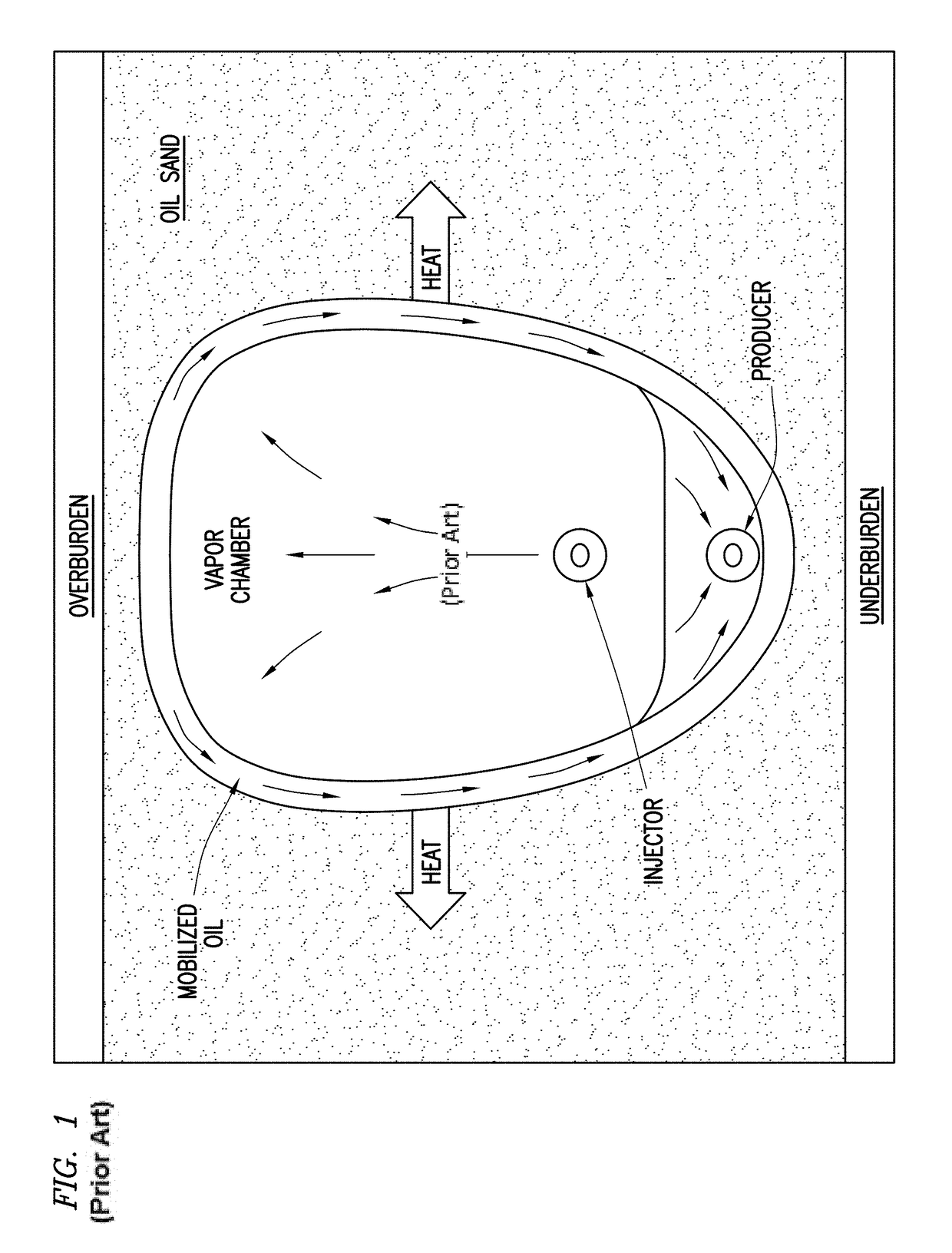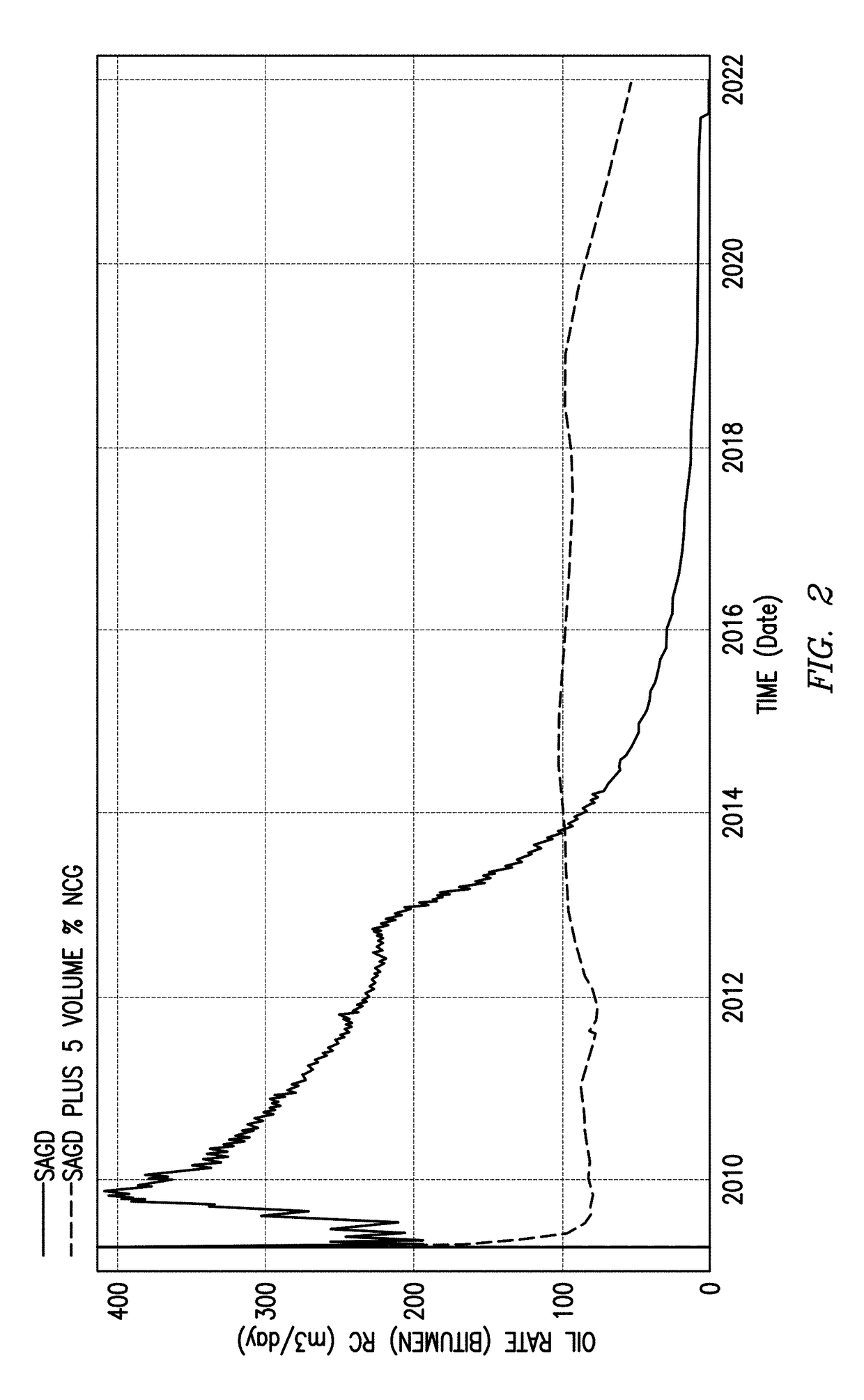Dual injection points in SAGD
a technology of sagd and injection point, which is applied in the direction of fluid removal, earth-moving drilling, borehole/well accessories, etc., can solve the problems of inability to pump out of the ground, difficult production of heavy oil and bitumen from subsurface reservoirs, and inability to achieve greater depths. economical access, increase the effect of sagd efficiency and delay of production
- Summary
- Abstract
- Description
- Claims
- Application Information
AI Technical Summary
Benefits of technology
Problems solved by technology
Method used
Image
Examples
example 1
SAGD with Dual Injection Wells
[0053]By using a first injection well placed 5 meters above the production well, and a second injection well placed at least 5 meters above the first injection well, the system of wells performed significantly better than to a single injection well set up.
[0054]The second injection well can be placed at any height above the first injection well, as long as it is below the top of the formation. In one embodiment the second injection well is 10 to 15 meters above the first injection well. It is important to note that the injection wells and the production wells can be offset or non-aligned, as known by one skilled in the art.
[0055]FIG. 6 plots rate of oil production. The average rate is improved over the base SAGD NCG co-injection case when dual injection strategy is employed.
[0056]A significant improvement in energy efficiency is shown through an improved cSOR (FIG. 7). In this set of simulations, SAGD at 4 MPa shows an improvement of >15%. FIG. 7 also d...
example 2
SAGD with Multilateral Injection Wells
[0057]The injection wells can comprise a multilateral well, where the injection wells have a common vertical well bore with a first lateral placed 5 meters above the production well, and a second lateral placed at least 5 meters above the first lateral. It is important to note that the injection wells and the production wells can be offset or non-aligned, as known by one skilled in the art. This dual injector SAGD method concept substantially decreases gas reflux and allows the fluids to move into the production well instead. This movement, in turn, allows the chamber to develop into a classical SAGD shape, retaining the height and oil rate at higher levels while improving the thermal efficiency. Unlike previously reported methods, the shape of the steam chamber is no longer affected by refluxing NCG at the injection well (FIG. 8). Work was carried out using a numerical simulator (CMG STARS) to evaluate the potential benefits of using dual injec...
PUM
 Login to View More
Login to View More Abstract
Description
Claims
Application Information
 Login to View More
Login to View More - R&D
- Intellectual Property
- Life Sciences
- Materials
- Tech Scout
- Unparalleled Data Quality
- Higher Quality Content
- 60% Fewer Hallucinations
Browse by: Latest US Patents, China's latest patents, Technical Efficacy Thesaurus, Application Domain, Technology Topic, Popular Technical Reports.
© 2025 PatSnap. All rights reserved.Legal|Privacy policy|Modern Slavery Act Transparency Statement|Sitemap|About US| Contact US: help@patsnap.com



